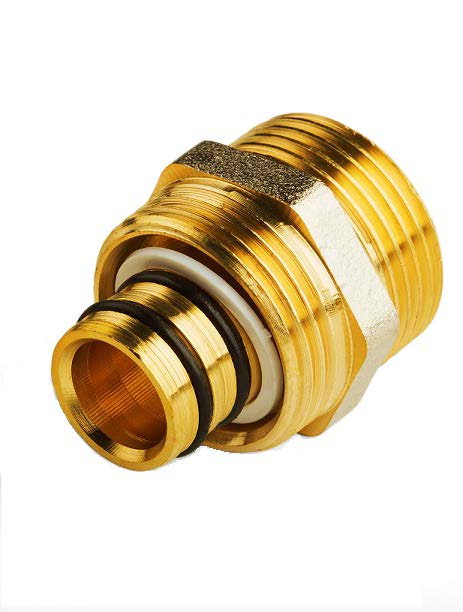Brass & the E.U. End-of-Life Vehicle (ELV) Directive
We answer and outline the End-of-Life Vehicle (ELV) Directive regulations and how they affect brass and copper manufacturers.
Updated January 2022
What is the End-of-Life Vehicle Directive?
The End-of-Life Vehicle (ELV) Directive is a European regulation that aims to facilitate the reuse, recycling and recovery of vehicles and their components and to prevent the disposal of hazardous waste. The Directive restricts the use of certain substances in vehicles to prevent their release into the environment.
When did the ELV Directive take effect?
The Directive was enacted in the European Union on October 21, 2000 under EU Directive 2000/53/EC. Restrictions for certain substances used in the production of new vehicles came into force on July 1, 2003.

Which substances are restricted?
Article 4(2)(a) requires Member States of the European Union to ensure that materials and components of vehicles put on the market since July 1, 2003 do not contain excess levels of lead, mercury, hexavalent chromium and cadmium. Annex II grants exemptions for certain materials in which the use of these substances cannot be avoided.
What are the limits for restricted substances?
A maximum concentration value of 0.1% by weight for homogeneous materials is permitted for lead, hexavalent chromium and mercury. The limit for cadmium is 0.01%.
Do copper alloys contain any of these substances?
Most copper alloys (e.g., brass and bronze) do not contain mercury, cadmium or hexavalent chromium. Many copper alloys used to manufacture vehicle components do contain small amounts of lead varying from 0 to 3.5% by weight.


Why is lead added to copper alloys?
Lead acts as a chip breaker and lubricant which provides manufacturing and performance benefits. Advantages include superior machinability required to achieve precise tolerances in tiny components and excellent sliding characteristics which play a vital role in vehicle safety features.
How are leaded copper alloys affected?
Copper alloys containing up to 4% lead by weight are exempt from the lead restrictions outlined in Article 4(2)(a) under Exemption 3 in Annex II.
What types of vehicle components are made from copper alloys?
The European Automobile Manufacturers’ Association (ACEA) estimates that approximately 500 mostly tiny components made from lead-containing copper alloys are present in a fully equipped vehicle. Typical applications include: pinions, shift forks, valve stems, connector pins, battery clamps, door locks, bearings, fittings for fuel injection systems and more.

How long will the exemption be granted for copper alloys containing lead?
Under Article 4(2)(b), exemptions covered by Annex II are subject to review on a regular basis to determine if they are still justified. Since the directive was implemented, the European Commission and industry stakeholders have acknowledged that there are no suitable alternative materials that can satisfy the diverse performance requirements of such a wide array of vehicle components. Thus, the use of lead-containing copper alloys cannot be avoided and the exemption is justified. The last review of Exemption 3 was completed in 2016/2017 which concluded that the use of lead in copper alloys was still unavoidable. The reviewers recommended conducting the next review in five years.
The exemption for copper alloys was up for review in 2021. What is the current status?
The European Commission contracts a consortium of independent consultants to provide technical assistance for the evaluation of exemptions. The consortium solicits input from relevant stakeholders during the review and issues a
formal recommendation to the Commission to extend, amend or reject the exemption. The ACEA helped gather feedback from industry for the stakeholder consultation which closed on December 8, 2020.
In November 2021, the final report from the technical consultants was published. In brief, the consultants
concluded that the continuation of Exemption 3 might still be justifiable under Art. 4(2)(b)(II) despite limited evidence provided. An extension for 3 or possibly 4 years was recommended to give manufacturers additional time to substitute leaded alloys where feasible. The EU Commission must now deliberate and decide if the recommendation should be accepted or modified. As such, the final decision published in the Official EU Journal may not arrive until late 2022.
To access the consultants’ full technical report and more information on the ELV exemption evaluation process, visit: http://www.elv.biois.eu/


Content created by the Copper Develpment Assossiation Inc. Download full pdf here.
About Us
Wieland Chase is a leading brass manufacturer and supplier for brass alloys in North America. As of July 2019, Wieland Chase became part of the strong global Wieland Group with a continued commitment to safety, quality and customer service. More about the Wieland Group
Contact Us
Online Payment
14212 Selwyn Drive
Montpelier, OH 43543
p 419-485-3193
p 800-537-4291
f 419-485-5945
Copyright 2023 © Wieland.
All Rights Reserved.
Privacy Policy
Terms and Conditions
